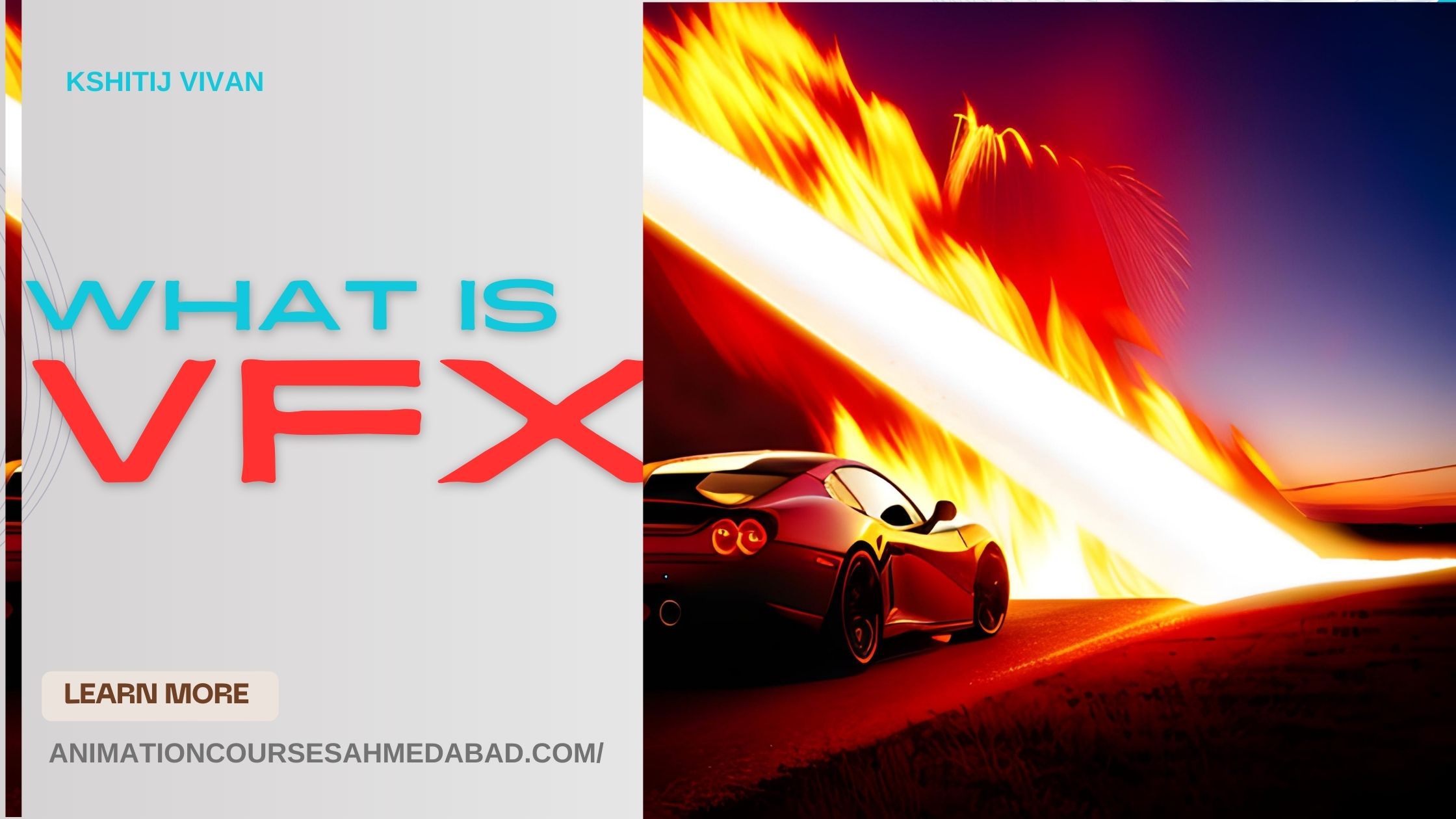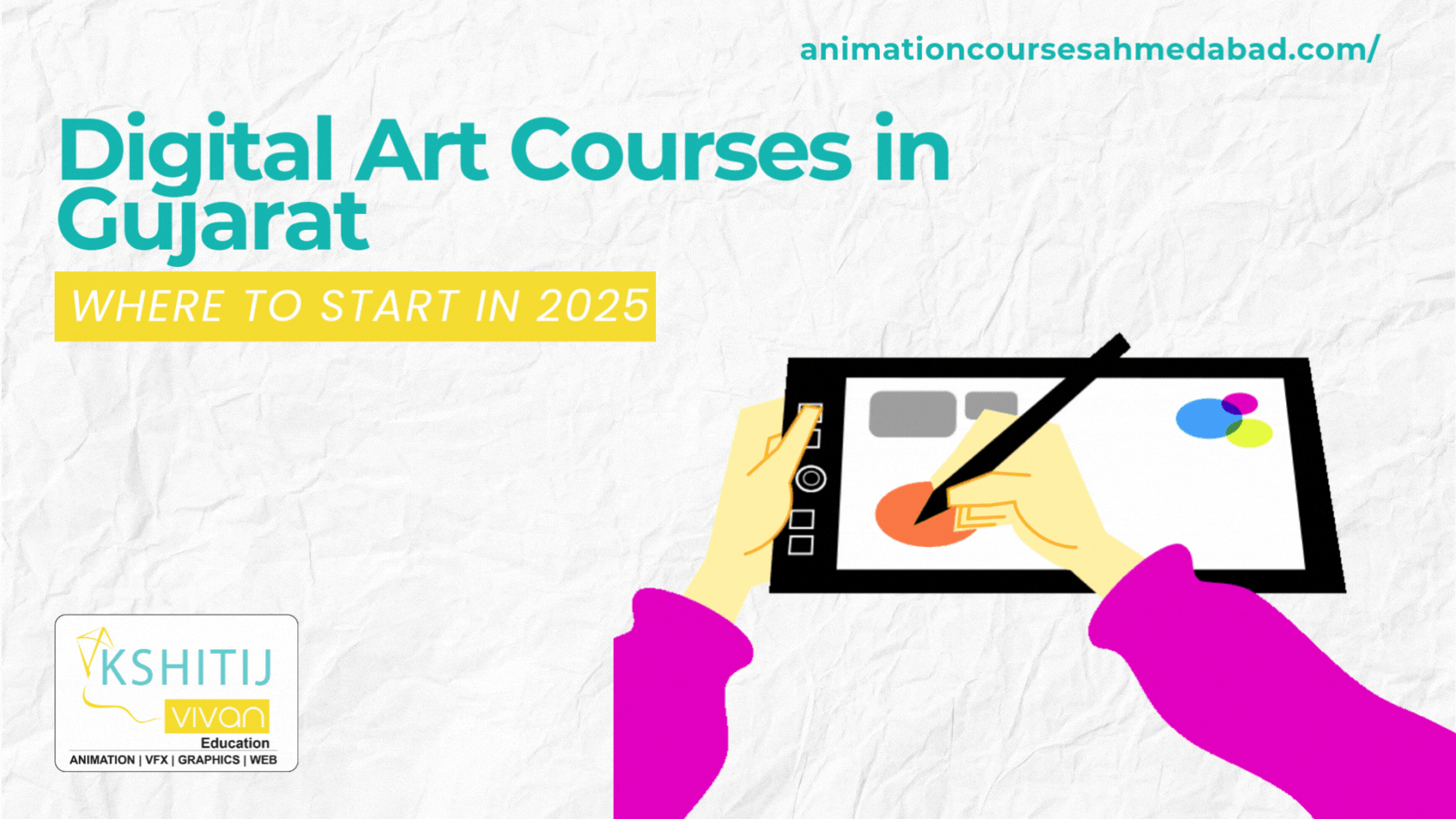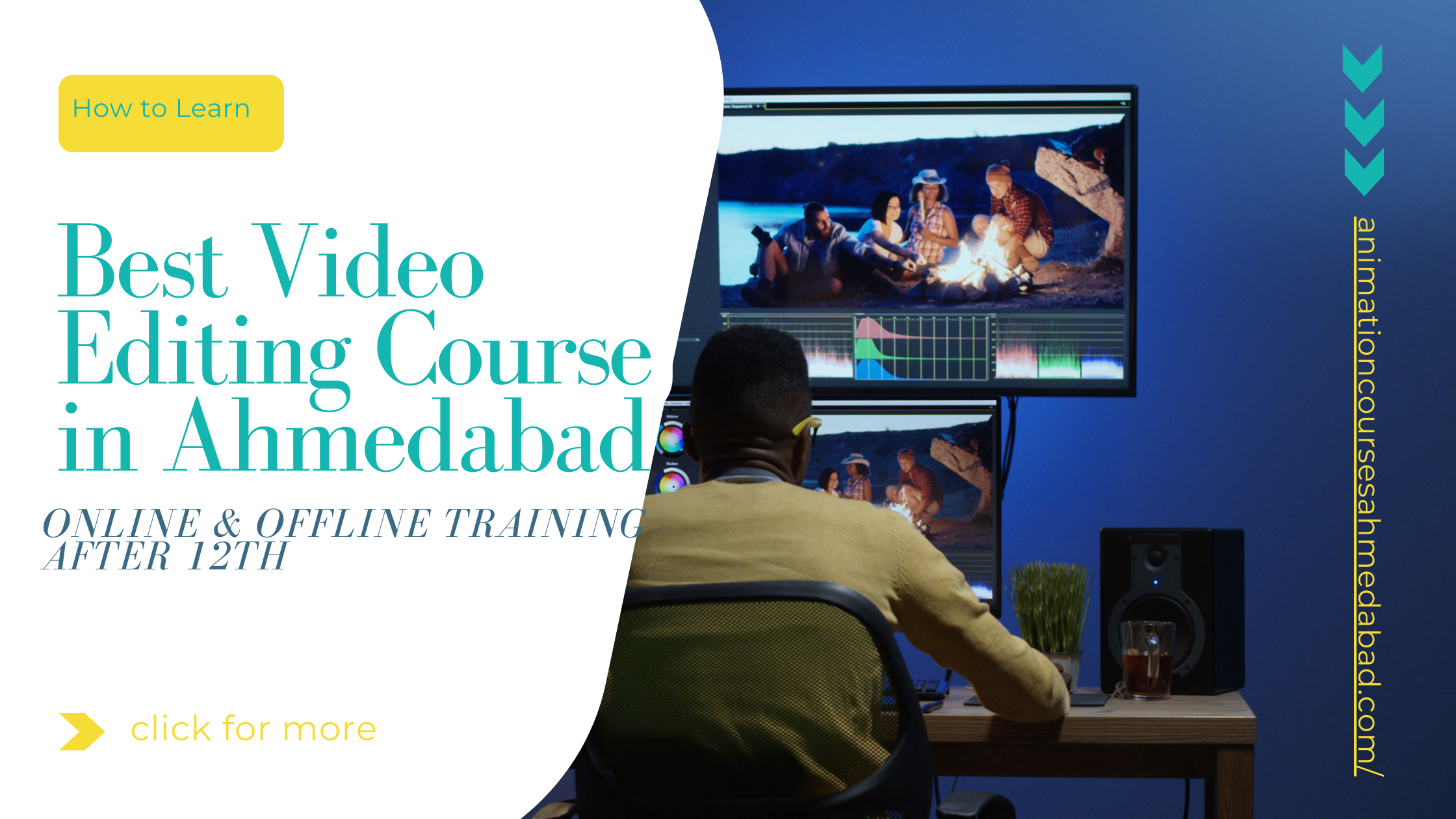
What Is VFX? Explained Definition, Types, Uses, Process, & Career
Prepare to journey into a realm where reality merges seamlessly with imagination, giving birth to the extraordinary.
Welcome to the captivating world of Visual Effects or VFX.
This is where the boundaries of what's possible are redefined, where fantastical creatures roam and breathtaking landscapes unfold with the stroke of a digital brush.
In this blog, we delve into the very essence of VFX – what is VFX(Visual Effects), its origins, its evolution, and its role in shaping the captivating narratives that grace our screens.
Whether you're a devoted cinephile or an aspiring artist, join us as we peel back the layers of this digital artistry and explore the enchanting world of VFX.
What Is VFX (Visual Effects)
Defining VFX
Breaking Down the Acronym: What Does VFX Stand For?
At its core, VFX stands for Visual Effects, the artful manipulation and augmentation of imagery to create fantastical worlds, breathtaking scenarios, and astonishing phenomena.
Through the amalgamation of technology and artistic prowess, VFX breathes life into the unimaginable.
A Brief Overview Visual effects trace their origins to the silent film era, where pioneers tinkered with practical effects like stop-motion animation and matte paintings.
Over time, the term "VFX" has evolved to encompass a myriad of techniques that defy reality and transport viewers to realms beyond imagination.
Evolution of VFX
From Early Beginnings to Modern Marvels: A Historical Journey
The evolution of VFX is a saga of innovation.
From Georges Méliès' pioneering tricks in "A Trip to the Moon" to the photorealistic wonders of today, each era has contributed to the tapestry of visual enchantment.
Early innovators laid the foundation, but it was the marriage of technology and creativity that birthed the visual spectacles we witness today.
Milestones in VFX: Pioneering Films that Revolutionized the Industry
Certain films stand as timeless beacons of VFX brilliance.
"Star Wars" introduced us to the galaxy far, far away, while "Jurassic Park" brought dinosaurs back to life with computer-generated wizardry.
These milestones marked paradigm shifts, pushing the boundaries of what was visually achievable and inspiring generations of VFX artists.
Categories of VFX
Special Effects vs. Visual Effects:
Drawing the Line Distinguishing between special effects (practical effects created on set) and visual effects (digitally created imagery) is essential.
While both serve to captivate, VFX delves into realms that practical effects cannot, giving rise to the fantastic, futuristic, and far-flung.
The Spectrum of VFX: Differentiating Between Practical and Digital Effects
The VFX spectrum spans from subtle enhancements to awe-inspiring phenomena.
Whether it's a subtle tweak to a scene's lighting or the creation of a massive digital metropolis, VFX artists are the conjurers of the unreal.
Exploring CGI: How Computer-Generated Imagery Transforms Reality
Computer-generated imagery (CGI) is the beating heart of modern VFX.
It’s a realm where algorithms and artistic vision converge, sculpting everything from mythical creatures to alien landscapes.
CGI bridges the gap between imagination and realization.
Check out the differences between VFX and CGI.
VFX in Filmmaking
Elevating Cinematic Experience: How VFX Transcends Storytelling
VFX isn't just about creating eye candy; it's a narrative tool.
From enhancing emotions to building entire worlds, VFX aids filmmakers in creating an immersive experience that resonates with audiences long after the credits roll.
Seamless Integration: The Art of Incorporating VFX in Live-Action Films
The magic of VFX lies in its ability to blend seamlessly with live-action elements.
It's not about replacing reality, but rather enhancing it.
The marriage of actors and digital creations requires meticulous attention to detail, ensuring a believable fusion.
VFX-Driven Blockbusters: Iconic Movies that Redefined Visual Spectacle
Certain films rewrite the VFX rulebook, leaving audiences in awe. "Avatar" immersed us in an alien world, while "Inception" bent reality itself.
These cinematic triumphs demonstrate how VFX isn't a side dish but the main course of visual storytelling.
The VFX Process: Behind the Curtain
Conceptualization and Pre-Production: Where VFX Planning Begins
VFX's journey starts in the minds of visionary artists and filmmakers.
Concepts are refined, storyboards are crafted, and the blueprint for digital marvels is laid out before the first pixel is rendered.
Lights, Camera, Data Capture: The Role of Cameras and Sensors
Capturing the real world in digital form is the foundation of VFX. High-tech cameras and sensors record data that serves as the clay VFX artists sculpt into their visual masterpieces.
Digital Sculpting and Modeling: Breathing Life into Imaginary Elements
Digital sculptors shape raw data into 3D models that become the building blocks of VFX.
Whether it's a mythical creature or a futuristic cityscape, this stage is where imagination takes form.
Texturing and Shading: Adding Realism to Virtual Surfaces
Texturing bestows digital objects with texture, color, and depth, while shading mimics how light interacts with surfaces.
This process infuses realism into the digital, making viewers question what's real and what's not.
Animation Magic: How Movement is Brought to VFX Creations
Animation is the heartbeat of VFX. It infuses life into static models, enabling them to dance, fly, or morph in seamless splendor. It’s where emotion meets code.
Simulation and Dynamics: Creating Natural Phenomena in a Digital Realm
Simulations replicate real-world physics in the digital domain.
From a fluttering flag to a roaring explosion, simulations add dynamic realism that makes scenes pulse with energy.
Rendering: Transforming Raw Data into Cinematic Visuals
Rendering is where the magic crystallizes.
Raw data transforms into lifelike imagery, complete with lighting, shadows, and intricate details.
It's the payoff for hours of artistic dedication and computational wizardry.
VFX Beyond Films
Small Screen Wonders: VFX in Television and Streaming
VFX isn't confined to the silver screen.
TV shows and streaming series wield VFX to build entire universes, from dragons soaring over medieval landscapes to sci-fi cities beyond the stars.
Gaming Realms: How VFX Shapes the Landscape of Video Games
VFX isn't limited to passive viewing; it's interactive in the gaming world. From realistic facial expressions to explosive effects, VFX elevates gameplay and immersion.
Augmented Reality (AR) and Virtual Reality (VR): Extending VFX to New Frontiers
With AR and VR, VFX isn't confined to screens—it’s woven into our reality.
These technologies merge the digital and physical realms, creating experiences that blur the lines between what's real and what's imagined.
VFX in Different Genres
Fantasy and Sci-Fi: Enchanting Worlds and Futuristic Visions
Fantasy and sci-fi genres thrive on imagination, and VFX amplifies this imagination, from mythical creatures to alien landscapes. It crafts the extraordinary from the ordinary.
Historical Epics: Recreating Eras with Impeccable Detail
VFX isn't just about the fantastical—it's a time machine. It reconstructs bygone eras with precision, from bustling ancient cities to historically accurate battles.
Horror and Supernatural: Crafting Fear Through Visual Illusions
Horror lives in the shadows, and VFX amplifies the terror. From eerie apparitions to bone-chilling transformations, VFX makes the supernatural tangible and terrifying.
Contemporary Settings: Enhancing Everyday Scenes with Subtle VFX
Not all VFX dazzle with grandeur. Sometimes, it's the subtle touches that make a scene. From removing modern elements in period dramas to enhancing atmospheric effects, VFX is the hidden hand of visual enhancement.
The VFX Masters: People Behind the Magic
The Digital Artisans: Roles and Responsibilities in VFX Production
VFX Supervisor: The Visionary Leader
At the helm of every VFX project stands the VFX Supervisor. A visionary leader translates creative visions into actionable plans.
With an expert eye, they oversee the seamless integration of VFX elements, ensuring they align with the director's artistic intent and the project's overall narrative.
Concept Artists: The Dream Weavers
Before pixels come to life, concept artists paint the first strokes of imagination.
They visualize characters, creatures, and environments, breathing life into initial ideas. Their sketches and illustrations set the stage for the digital wonders to follow.
Modeling and Texturing Artists
Modeling artists sculpt digital models that serve as the building blocks of VFX.
These models are then textured by artists who meticulously apply surface details, colors, and textures, giving objects their lifelike appearance.
Rigging Artists: Infusing Movement and Life
Rigging artists equip digital models with intricate skeletons, enabling them to move and emote realistically.
They lay the groundwork for animators to breathe movement and personality into characters and objects.
Animation Wizards: Breathing Life into Pixels
Animation wizards wield their magic to make digital creations dance, fight, and emote.
They study movement in the real world, translating it into captivating animations that resonate with audiences.
FX Artists
FX artists are responsible for the visual magic – the explosions, fire, water simulations, and other dynamic phenomena that dazzle viewers.
With physics simulation and artistic finesse, they conjure effects that defy reality.
Lighting and Rendering Artists
These artists bring scenes to life with light, shadows, and reflections, ensuring a seamless blend between live-action elements and digital creations. Their mastery of lighting adds depth and realism to the virtual world.
Compositors
Compositors are the final magicians who blend all the elements seamlessly.
They take the output from various departments, integrate them flawlessly, and add finishing touches, creating awe-inspiring final visuals.
Technical Directors: Behind-the-Scenes Architects
Technical directors bridge the artistic and technical realms. They develop tools, pipelines, and processes that enable the VFX team to work efficiently while pushing the boundaries of innovation.
VFX Producer: The Organizational Maestro
Behind every creative endeavor is the organizational backbone – the VFX producer. They manage budgets, schedules, and the coordination of countless moving parts, ensuring the project stays on course.
VFX Editor: Crafting the Visual Symphony
VFX editors assemble the myriad of elements into a coherent visual narrative. They work closely with directors and VFX artists to fine-tune sequences, ensuring the visual story unfolds seamlessly.
Challenges and Innovations in VFX
Realism vs. Fantasy: Striking the Balance in VFX
VFX walks a tightrope between realism and fantasy. Achieving believability while crafting the unreal is a constant challenge, one that VFX artists face with unwavering determination.
Pushing Boundaries: Technological Breakthroughs in VFX Industry
Technology is the palette of VFX artists.
From advancements in CGI to real-time rendering, each leap ushers in new eras of possibility, fueling the creative engines of the industry.
Ethics and Impact of VFX
Authenticity vs. Deception: Ethical Considerations in VFX
VFX isn't just about creating visual marvels; it’s also about ethical responsibility.
Balancing artistic freedom with truthfulness is a tightrope walk that challenges VFX creators.
Cultural Representation and Diversity: VFX's Role in Shaping Inclusive Narratives
VFX isn’t just about effects; it’s about inclusivity. It paves the way for diverse characters, cultures, and narratives, breaking down barriers and fostering a richer storytelling tapestry.
The Future of VFX
AI and Machine Learning: Reshaping the VFX Landscape
AI and machine learning aren't just buzzwords, they're revolutionizing VFX.
From automating certain tasks to predicting artistic preferences, the future is a synergy of human creativity and machine precision.
Interactive VFX: The Path to Immersive Audience Engagement
The future of VFX isn’t just about visuals; it’s about engagement. Interactive VFX invites audiences to step into the narrative, creating experiences that are both captivating and participatory.
Creating Cinematic Illusions: Join Our VFX Course at Kshitij Vivan Institute
Explore the captivating realm of Visual Effects (VFX) through the immersive course offered by Kshitij Vivan Institute.
Whether you're an aspiring artist, a tech enthusiast, or someone who marvels at VFX magic, our industry-expert instructors will guide you from fundamentals to advanced techniques.
With hands-on experience using industry-standard software, you'll be well-prepared to thrive in the competitive world of VFX.
Join our supportive community, unleash your creativity, and embark on a journey that could shape your future in the exciting realm of visual effects.
Enroll now and turn your passion into a rewarding career with Kshitij Vivan Institute's VFX courses.
Conclusion
VFX stands as a conduit between dreams and reality in a world where imagination knows no bounds and technology continually evolves.
It's an art form that encapsulates the human spirit's limitless creativity, weaving stories that traverse the boundaries of the possible and the impossible.
As technology advances and creative minds continue to push the envelope, the magic of VFX will only continue to expand its horizons, casting spells of wonderment upon generations to come.



